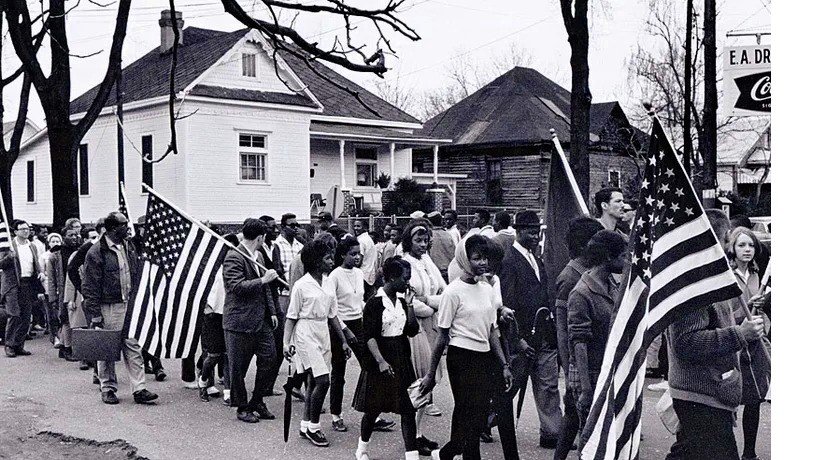The Civil Rights Act of 1991: Strengthening Legal Protections


An important turning point in the United States struggle against discrimination is the Civil Rights Act of 1991. Because it strengthened the legal safeguards offered by earlier civil rights laws, this legislation was a turning point in American history. In this article, we’ll look at the main ideas of the 1991 Civil Rights Act, as well as its background, effects, and current applicability.
Background History of the Civil Rights Act
The original Civil Rights Act of 1964 laid the groundwork for the Civil Rights Act of 1991. The 1964 Act sought to end racial prejudice and segregation in public places, educational institutions, and workplaces. Although the 1964 Act was a ground-breaking piece of law, it had some drawbacks.
The persistent struggles marginalized populations confront made the need for further enhancing civil rights protections clear. Legislative attention and action were required to address issues like unequal access to work opportunities, discriminatory hiring and promotion procedures, and impediments to equal justice.
Important Clauses of the 1991 Civil Rights Act
The Civil Rights Act of 1991 improved legal protections against discrimination in a number of significant ways. Some of its main clauses are as follows:
Widening of Treatments
The Act increased the types of damages that can be awarded to discrimination plaintiffs, including compensatory and punitive damages.
Trials by Jury
In cases of deliberate discrimination covered by Title VII of the original Civil Rights Act, it restored the right to a jury trial.
The onus of proof
The Act streamlined the process for victims seeking redress by defining the burden of proof necessary for discrimination claims.
Commercial Need Defence
The “business necessity” defense, which historically permitted businesses to defend discriminatory practices, was no longer as widely used.
Commission on the Glass Ceiling
The Glass Ceiling Commission was established under the Act with the goal of examining and removing obstacles to the growth of women and underrepresented groups in the workforce.
The Civil Rights Act’s Effects and Importance
The Civil Rights Act of 1991 significantly altered the American legal system. It gave victims of prejudice a more complete set of resources to pursue justice and redress. Because individuals who participate in discriminatory practices can be held accountable through the use of compensatory and punitive damages, victims are empowered.
The Act recognized the value of enabling a jury of peers to hear certain matters by restoring the right to a jury trial. This ensured more impartial proceedings and raised the possibility that discrimination victims would receive justice.
The Glass Ceiling Commission’s creation brought attention to the ongoing fight for racial and gender equality in the workplace. The Commission sought to establish a more inclusive and equal workplace by researching and removing obstacles to advancement.
Read More: The Role of Civil Rights Laws in Combating Discrimination 2023
Criticisms and Obstacles
Although the Civil Rights Act of 1991 represented a great advancement, it was not without its difficulties and detractors. The Act’s provisions for compensatory and punitive damages drew criticism from those who thought they may encourage unnecessarily frivolous lawsuits and burden the legal system. Others complained that the Act fell short of resolving structural problems and establishing true equality.
The Act also encountered resistance from some who thought it violated the rights of employers and complicated corporate operations. With constant discussions over the proper scope and boundaries of anti-discrimination laws, balancing the interests of all parties has proven to be a challenging undertaking.
Today’s Civil Rights Act
The Civil Rights Act of 1991 still provides an essential framework for battling prejudice and advancing equality. Its provisions have been crucial in forming legal safeguards, promoting diversity, and holding those responsible for discriminatory practices accountable.
The struggle for civil rights and fair opportunities is still going on today. Ongoing discussions about how to address systematic injustices and encourage inclusivity in all spheres of society are informed by the lessons acquired from the Civil Rights Act of 1991. The Civil Rights Act of 1991 still has application in the battle against discrimination today. It serves as a reminder of the steps taken in the right direction and the work still left to do to attain complete justice and equality for all. Despite the tremendous progress that has been made, problems still exist, and new discriminatory practices are developing. The Act serves as a base upon which other developments to address the changing civil rights context might be constructed.
Read More: The Civil Rights Act of 1964: A Milestone in American History
Conclusion
The Civil Rights Act of 1991 was essential in enhancing the legal safeguards against discrimination in the US. The Act significantly advanced equity and justice by broadening available remedies, reintroducing jury trials, defining the burden of proof requirements, and establishing the Glass Ceiling Commission.
The Act’s extension of the types of remedies available to discrimination victims was one of its main elements. Prior to the Act, there were few available remedies, which sometimes prevented victims from receiving adequate recompense for the injury they had endured. Punitive and compensatory damages were introduced as a way to make offenders answerable for their deeds.
FAQs
What is the 1991 Civil Rights Act?
The United States increased its legal defenses against discrimination with the passage of the Civil Rights Act of 1991, particularly in the workplace.
What main clauses made up the Civil Rights Act of 1991?
The Glass Ceiling Commission was founded, the “business necessity” defense was curtailed, the right to a jury trial was restored, the burden of proof standards was clarified, and more remedies for discriminating victims were made available.
What effects did the 1991 Civil Rights Act have on society?
The Act gave people more powerful means of pursuing justice and redress, which strengthened them. Additionally, it promoted diversity, raising awareness of unfair practices, and shed emphasis on persisting difficulties in achieving equality.
What were some of the Civil Rights Act of 1991’s criticisms?
Critics voiced worries about the potential for excessive litigation, barriers to addressing systemic problems, and alleged violations of employer rights.
What current issues does the Civil Rights Act of 1991 address?
The Act continues to influence legal safeguards and contributes to continuing discussions about eradicating discrimination and fostering diversity. It serves as a reminder of the struggle for equal rights and civic liberties that is still going on today.











